Nearly 8 billion human beings sharing the planet consume a great deal of energy. This chart shows us a bit about where we have been and where we are headed, energywise. I’d like to add one point of clarification to the graph below. In 2012, world energy consumption exceeded 500 exajoules. By 2020, it was above 600 exajoules.
1965 - World energy consisted of mostly fossil fuels with a small amount of hydro-electric energy and a bit of nuclear power.
1975 - By the time of the OPEC oil embargo (a de facto carbon tax), France and Japan in particular, with the USA also joining the effort, deployed nuclear power on scales never before seen. By about 1990, nuclear power had offset about as much fossil fuel use as hydropower.
The initial deployment of nuclear power happened quickly. As Jack Devanney notes in Nuclear Power is Too Slow:
The French were able to hold their build times below 6 years up to about 1985, Figure 3, with very little scatter. In the 1980's, France was adding 35 TWh's of new nuclear power production each year, Figure 4. France's annual electricity demand at that time was about 350 TWh. France was decarbonizing her grid at the rate of 10% per year.
Figure 1. French Build Times. Data from IAEA PRIS database.
But it was the Japanese that set the bar for the efficient deployment of nuclear power. Again, Jack Devanney:
It is the Japanese that really put the lie to the claim that nuclear has to be slow. They built 60 plants between 1970 and 2009, Figure 5. The median build time was 3.8 years, which is about the time it takes to build a big coal plant. There is no sign of a learning curve in Figure 5. But there is also no sign of a fall off. The Japanese system involves shipyard-like competition. The two big players have been Mitsubishi and GE-Hitachi. Other entrants such as Toshiba are always prowling around. While we might expect some form of cartelization in both shipbuilding and power plant construction, effective competition has been maintained in both cases. And in the Japanese case, the regulators have not played an American style dominant role, at least not until after Fukushima.
Figure 2. Japan NPP build times. Monju and Fugen ATR were experimental. Graph courtesy of Geoff Russell. Data from IAEA PRIS database.
In short, the historic time for each energy source to grow from 1 to 10 exajoules in primary energy production was 12 years for nuclear energy, 33 years for crude oil, 39 years for natural gas, 52 years for coal, and 59 years for hydro-power. World Energy Consumption
600 Exajoules
600 exajoules sounds like a lot of energy—because it is a lot of energy.
1 joule = 9.48×10−4 BTU.
1 boe (barrel of oil equivalent) = 5.45 x 106 BTU.
1 cubic feet of natural gas = 983 BTU.
1 metric ton of coal = 22.72 * 106 BTU.
1 exajoule = 174 million barrels of oil equivalent.
Yet even with 600 exajoules consumed, humans still do not have enough energy—not even close. Today, some 2.3 billion human beings rely on cow dung (the Indian market is valued at $4 Billion) and such to cook food and for heat. Over 3 million (about 1/2 of the Haulocaust fatalities) die annually because they cannot afford cleaner fuel. For India to have the same standard of living as China, its energy consumption would need to increase over 400%.
Imagine a World Consuming 1,200 Exajoules
We should be imagining a world where human beings have ready access to 1,200 exajoules of clean, carbon-free, air-pollution free, dependable thermal energy. Nuclear fission produces 6 orders of magnitude more thermal energy than combustion. Why are we burning carbon when we could be splitting atoms?
We could release 1,200 exajoules of nuclear energy using only 1/3 of the uranium mined in 2021. Without trying hard, humanity mined uranium ($30-ish per pound market value at the time), with a fuel energy value of 3,500 exajoules—nearly 6 times as much as all the energy consumed by the world during the same year.

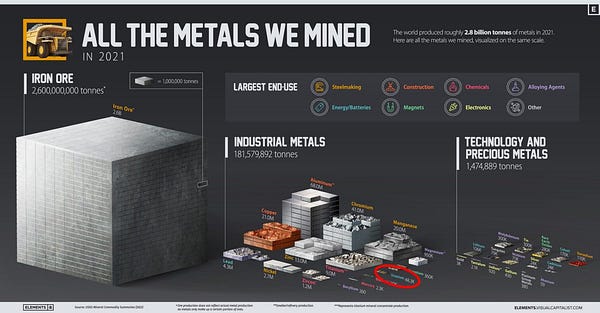

Math is not my strong suit, but it’s plain enough that 3,500 is a lot bigger than 600. Nuclear Power produces orders of magnitude more useful energy, with orders of magnitude fewer natural resource inputs, for the longest periods of time, than any other energy engine ever devised by humans. Its widespread use is inevitable. The sooner we realize this the better.
Doing much more with much less is in the best interest of humanity and the Civilization that provides our shelter and sustenance, our care and support, our common library.
Nuclear power produces so much with so little that it does not have a natural constituency. Yet there are many natural constituencies against it.
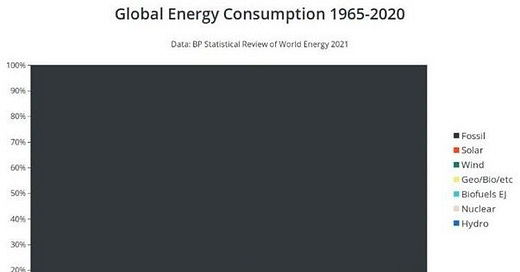



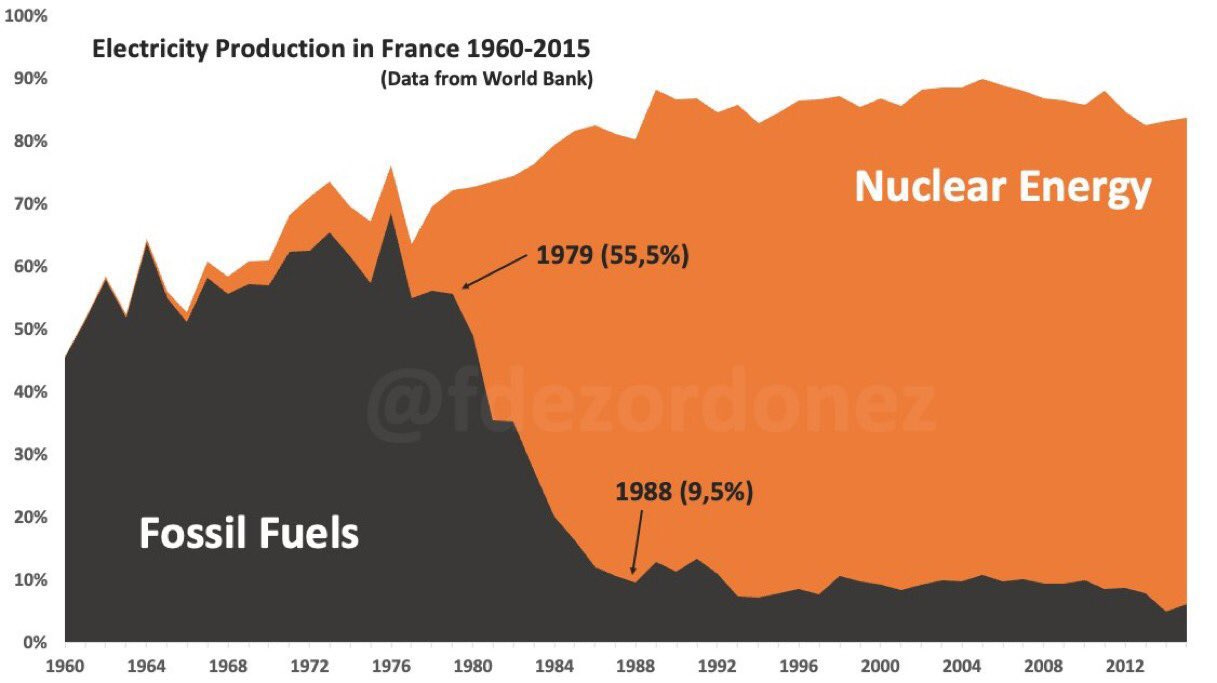


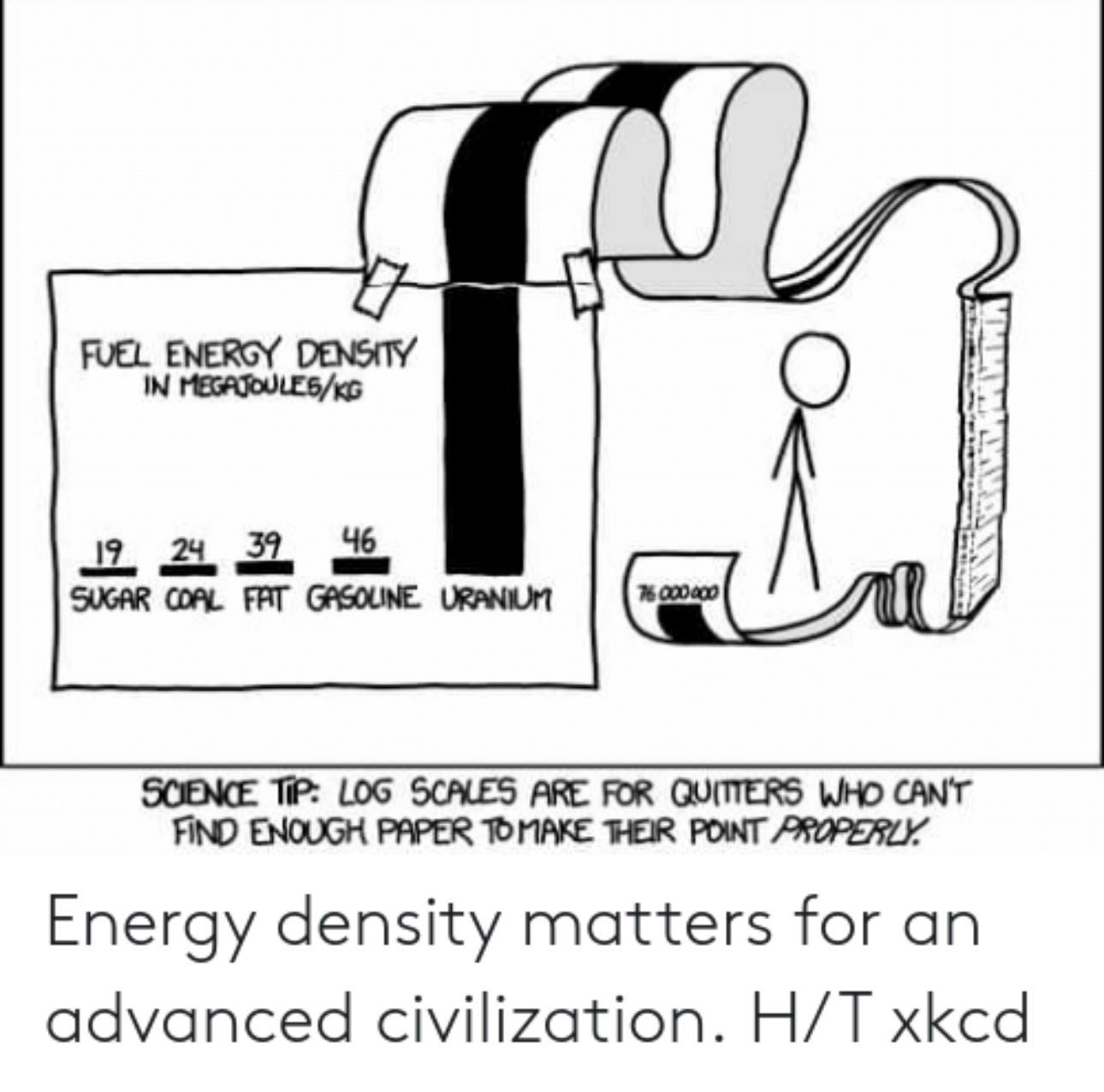
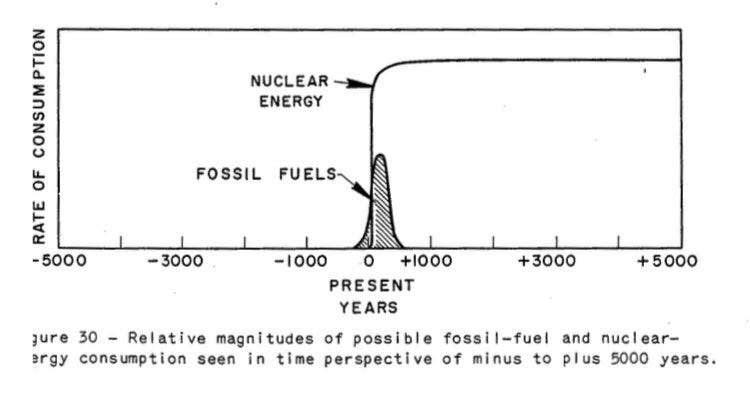

The green energy industry is a racketeering scam that steals the energy industry and uses stolen is tax dollars to do it. To scale nuclear , the only companies that remotely could handle the task are large vertically integrated oil companies. If we ever get rid of these sniveling beta males of the wef , and trump gets elected , big oil needs to be incentivized to phase out oil and gas and move to nuclear. The issue is economics. Government buffoons and grifters will prevent this from happening.
There's a paper on energy consumption limits I should dig up. Even using nuclear energy, just the waste heat will boil the ocean in a few centuries at current rate of economic growth. We have to go off planet for the billions to come.
So this issue can be kicked down the road, but it's still present, much as I dislike it.